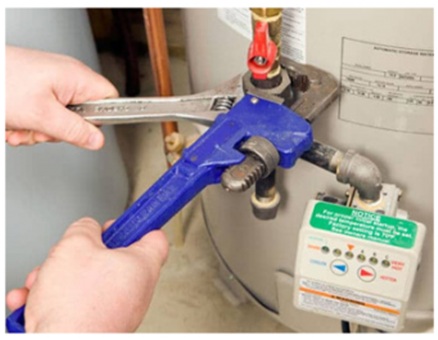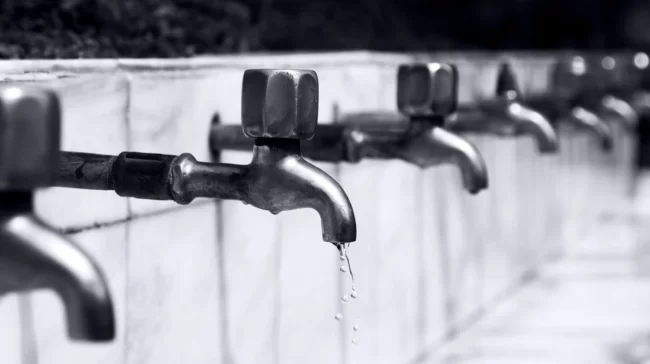
If your water heating bills comprise a significant chunk of your utility bills, it’s time you invest in a tankless water heating system. According to ENERGY STAR, a tankless water heater could help your family of four save up to around $20 annually. This means you’ll be saving around $300 over the heater’s lifetime. On a macro level, the cost savings contribute to around $215 million per year and save up on 1.8 billion pounds of greenhouse gas emissions.
Why do tankless water heaters last longer?
Tank-based water heaters are made up of steel, which makes them increasingly susceptible to rust and corrosion. Most tank water heaters have an inbuilt sacrificial anode rod to prevent corrosion. This rod sits in the metal tank shell place and needs to be replaced after a couple of years. If you forget to do so, the tank will further rust and leak. On the other hand, a tankless water heater never rusts because there is no sitting water to sit in and rust. Simultaneously, there is no sacrificial anode that you need to replace; therefore, a tankless water heater stays with you longer.
A tankless water heater’s longevity can also be associated with the fact that there is less sediment buildup. When the water inside a tank heater gets heated, minerals like magnesium and calcium separate from the water and deposit on the tank bottom. This leads to an increase in your water bills, lesser availability of hot water, and an uneven and fluctuating water temperature. Sediment buildup can also cling to the heating elements, leading to tank failure. You can entirely mitigate these issues by investing in a tankless water heater. Since there is no tank, there is no room for mineral deposits. If the heater is dealing with a hard water issue, you can get the deposits descaled routinely.
How to make your tankless water heater last long?
The key is to make your tankless water heater last long by investing in regular upkeep and maintenance. Here are a few tips to help you:
Proper installation
The key to a water heater’s longevity is a proper and professional installation. If you’ve DIYed your way through it or have gotten in touch with someone who doesn’t have a professional plumbing license, the installation process could go south. At times, improper installation of gas-powered tankless water heaters can lead to a faulty connection to the main gas supply line. If the gas connection is improperly fitted, it could lead to a dangerous gas leak and put your home at the risk of an explosion—especially if it comes in contact with the water heater’s ignition flame. A well-qualified plumber will also ensure that your home’s existing wiring the energy demand for the electric tankless water heater prevents short circuits.
Regular descaling
Although the calcium buildup process is a lot slower for tankless water heaters, it’s still there, and this is why you need to descale the heater every now and then. The calcium deposits can also clog up the heating elements, making your heater less functional. If you skip maintenance for too long, the buildup can also restrict water flow and erode the tankless water heater’s walls.
Descaling isn’t a complicated process, and you can easily attempt it at home. All you need is an hour and a half of free time, a descaling pump, some professional descaling solution (or white vinegar), a big bucket, and two drain hoses.
The process is simple. Start by switchingoff the power supply and shutting off the water supply valves. Drain any water inside the heater using a drain valve. Next up, attach the hoses—one end to the input valve and the other to the pump. For the second hose, attach one end to the output valve and the other into the bucket. Pour the descaling solution into the bucket and place the pump inside. After you’ve done so, turn on the pump and open up the hot water valves. Let it run for around 45 minutes. Turn the pump off and rinse the water heater with cold water a couple of times. This is to make sure there are no traces of the descaling solution in the heater. Once the process comes to an end, reattach the fixtures and turn it on again.
If the process seems confusing or too time-consuming, get a professional plumbing service to do it for you.
Install insulation
Did you know insulating your tankless water heater can help you cut down standby heat losses by 25% to 45% and reduce your annual water bill by around 16%? Other than energy savings, a good water heater blanket also improves efficiency and reduces strain on your water heater, leading to the heater’s long-term functioning.
If you have a gas water heater, it needs to be wrapped all way around—from the top to the area below the container. Leave out the anode, controller, and pressure and temperature relief valve. If you have an electric tankless water heater, you can insulate the sides and the top since there are no exhausts. However, don’t cover any heating element panels to avoid the risk of a fire.
In a nutshell, tankless water heaters offer a wide range of efficiency, affordability, and convenience benefits compared to tank water heaters. If you’re still using a tank water heater, now is the time to get a professional plumbing service to install one for you.
Author bio:
The author of this blog is a seasoned plumbing expert and has been associated with Pro Serve Plumbing for many years, focusing on tankless water heating systems.
The family-owned company is a renowned provider of reliable and affordable plumbing services in Fort Worth, Texas. Some of their most sought-after services include pipe repair,leak detection, tankless water heater installations,kitchen and bathroom repairs, and emergency plumbing services.





